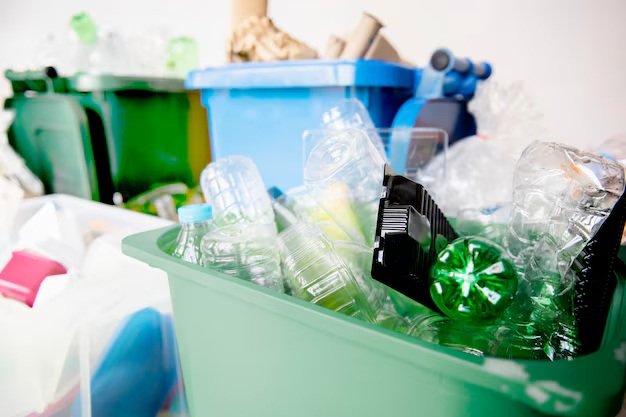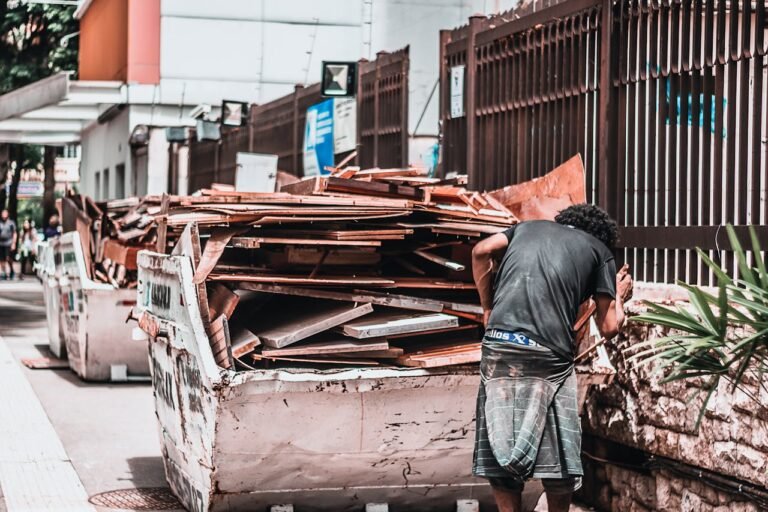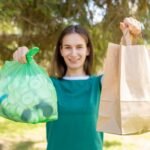Why Reuse Is Better Than Recycle: A Comprehensive Guide
Recycling is familiar and feels like doing the right thing. We rinse a jar, drop it into the right bin, and hope it gets a new life. But recycling has limits: collection, contamination, transportation and the energy needed to reprocess materials all cost carbon, money and time. In practice, only a small share of packaging becomes high-quality recycled material. According to Time, only about 14% of plastic packaging is effectively recycled globally — the rest is incinerated, landfilled, or lost to the environment. “We cannot recycle our way out of the plastic problem,” many circular-economy experts now warn.
Reuse is different. It prevents waste by keeping the original product or container in service longer, avoiding the need to remake the same thing. Reusable systems — from refill stations and returnable bottles to buy-back and repair services — often cut the whole-life environmental cost far more than recycling alone. According to the Ellen MacArthur Foundation, reuse business models reduce the need for single-use packaging and can deliver strong environmental benefits when they are designed around convenience and scale.

How People and Pilots Are Proving it Works
Across the world today, real companies and real shoppers are already showing how reuse can scale. In Santiago, Chile, the start-up Algramo runs refill vending machines and electric tricycles that let people top up household detergents and cooking oil into reusable containers. During one lockdown period, their sales rose 356% — a sign that refill systems can be resilient and even grow under stress. José Manuel Moller, Algramo’s founder, put it plainly: “People are deciding between their pocket or their planet, so we need to be cheaper and better.” That mix of affordability and convenience is why big brands such as Unilever have piloted refill partnerships with Algramo.
TerraCycle’s Loop programme has pushed the idea into mainstream retail. Loop partners with global brands and retailers to sell products in durable, returnable packaging; after use, the pack is returned, cleaned and reused. Loop reported major growth in 2024, expanding into more stores and countries — a concrete example that large supply chains can adopt reuse when logistics and business models align.
In clothing, Patagonia’s Worn Wear program encourages repair, resale and reuse of technical garments. Patagonia says keeping gear in use longer reduces demand for newly manufactured items, and real people use it. Customers report meaningful savings and a chance to buy gear with a far smaller footprint than new production. This is not theory; it’s behaviour turned into a product pathway.
Closer to small-business stories, independent refill shops and the owners who run them also show the human side of reuse. In England, Vicki Daws of Refill Mill told local press how her store has kept thousands of plastic bottles out of waste streams by giving shoppers a simple way to refill essentials. These neighbourhood-level projects matter because they make reuse visible and practical for everyday people.
What the Research Actually Says
Science and modelling show that reuse usually wins, but with important caveats. Life-cycle assessment (LCA) studies find that reusing a container or a product typically lowers greenhouse gas emissions, resource use and pollution compared with single-use-plus-recycling — provided the reusable item is used many times and transport and cleaning emissions are kept low. A 2024 review of LCA applications found that reuse and collection systems can deliver notable environmental benefits, especially for textiles and packaging, but results vary by product, distance travelled and how often the item is reused.
UK charity WRAP built a practical tool to help businesses and cities estimate the economic, environmental and social impacts of reuse schemes. WRAP’s Benefits of Reuse tool is explicitly designed so organisations can model trade-offs — for example, weighing the extra water and energy used to wash reusable cups versus the emissions avoided by not producing so many single-use cups. According to WRAP, modelling helps reveal where reuse is clearly better, and where design or logistics need to improve to get the benefit.
The evidence base also stresses scale and convenience. Closed-loop pilots (stores, campuses, stadiums) are easier to run because returns are predictable; open public systems need infrastructure and standardisation to be cost-effective. The Ellen MacArthur Foundation’s work on returnable packaging highlights the need for collaboration across brands and retailers to make reuse simple for consumers — the easier it is, the more likely people will take part.
At the same time, researchers are cautious: environmental wins aren’t automatic. If a reusable container is heavy, cleaned inefficiently, or returned only rarely, its climate advantage shrinks or disappears. Time’s coverage of the reusable packaging trend pointed out that the “last mile” — the consumer returning the item — and the resources for cleaning and logistics are decisive variables. In other words, design, user behaviour and local systems determine whether reuse beats recycling.

How Governments, Companies, and You Can Scale Reuse
Scaling reuse needs three practical threads pulled together: smart policy, business redesign, and everyday behaviours.
First, policy. Governments can level the playing field with regulation and incentives. Deposit-return schemes, standards for returnable packaging, and modest subsidies for reuse pilots make reuse financially viable early on. The Ellen MacArthur Foundation and other policy groups argue that standardisation of reusable formats and collaborative collection networks will reduce costs and complexity for businesses and customers.
Second, business models. Companies must rethink packaging as a service rather than a disposable cost. Big-name pilots (Loop, Algramo, Patagonia’s trade-in and repair services, and retailer programs like IKEA’s buy-back and resale offerings) show different models that work: deposit-and-return, refill-in-store, doorstep refill, and repair-and-resell. Closed-loop environments — workplace cafeterias, universities, festivals and city supermarkets — are fertile ground to start: predictable return rates and consolidated logistics make reuse cheaper and easier to operate at first.
Third, make it easy for people. Behaviour is not the hard part if returning or refilling is easier than throwing away. Refill stations must be quick, affordable and hygienic. Reusable packaging must be designed so it’s light, stackable and easy to clean. Communication matters: shoppers need clear instructions and quick incentives, such as small price discounts or loyalty points for using a refill option. Closed Loop Partners summarises this as a need for “customer-centred design” to maximise participation.
Practical steps you can take now:
- Choose reuse where possible: buy refills, repaired items, or products from resale schemes.
- Support retailers that offer reuse or refill options; your spending shapes markets.
- If you run a business, model reuse with tools like WRAP’s Benefits of Reuse to find the real carbon and cost impacts. According to WRAP, modelling is the fastest way to spot where reuse gives the biggest returns.
Small table: quick facts and cases (sources cited)
| Initiative | Key metric or win | Source |
|---|---|---|
| Algramo refill tricycles (Santiago) | Sales rose 356% during Apr–Jun 2020 lockdown | According to the Ellen MacArthur Foundation, 2022. |
| Loop (TerraCycle) | Major retail expansion in 2024 (France, Japan, many brands) | TerraCycle year-in-review, 2024. |
| Global plastic packaging recycling rate | ~14% effectively recycled | According to Time, 2021. |
| Patagonia Worn Wear | Program keeps gear in circulation and supports repair/resale | Patagonia Worn Wear info, 2024–25. |
| Reuse modelling | WRAP’s Benefits of Reuse tool helps measure trade-offs | According to WRAP, 2024. |
Conclusion — Practical, Human Scale, and Honest
Reuse is not a magic bullet, but it is one of the most promising levers we have. The basic logic is humble: keep things doing their job rather than making new ones. When design, logistics and user behaviour align, reuse reduces carbon, saves materials, and cuts waste in ways recycling alone cannot. The evidence from pilots and brands — from Algramo’s tricycles to Loop’s retail rollouts and Patagonia’s repair-first approach — shows reuse can work at household and industrial scale, but it needs policy support and smart business models to become normal.
If you want to act today: try a refill shop, repair instead of replace, choose brands that offer returnable packaging or buy-back schemes, and push your local stores or workplace to pilot reuse. These practical choices create the demand and data that let reuse move from promising pilots to everyday systems. As many practitioners say, reuse succeeds when it’s cheaper, easier, cleaner and visible — so choose options that meet those tests, and you’ll be part of making waste a smaller problem for everyone.







